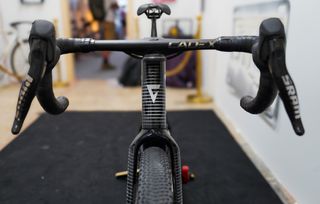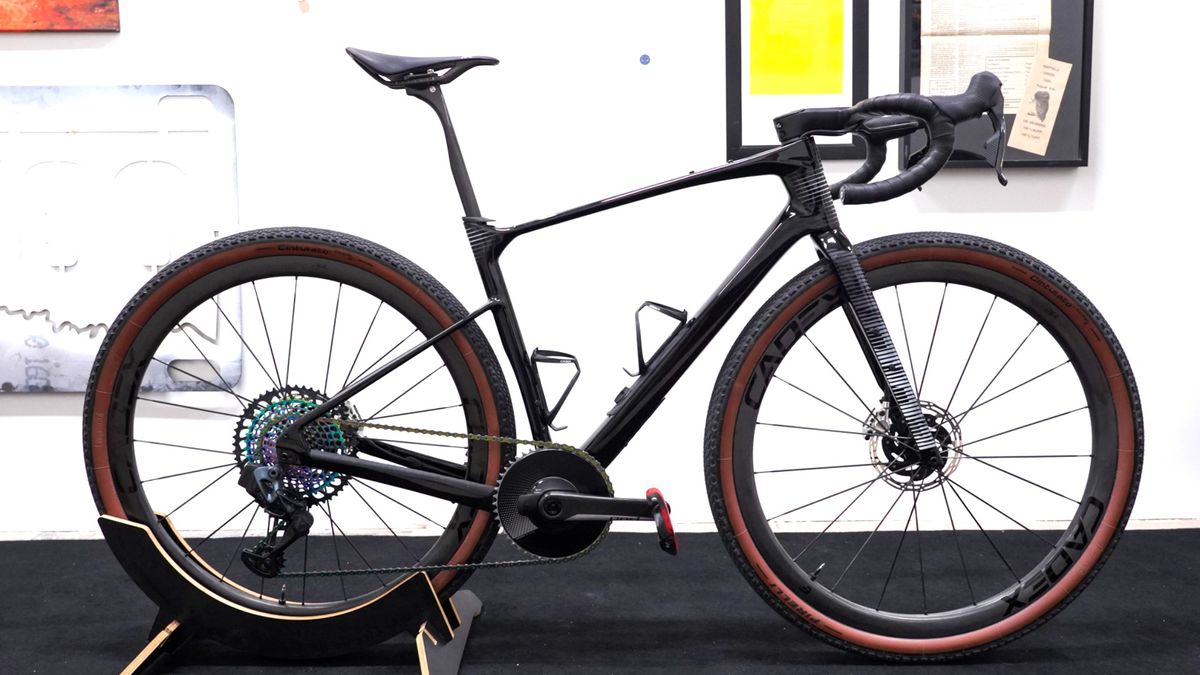Unbound Gravel was a hot spot for unreleased new bike technology this year. We spotted SRAM’s unreleased Red XPLR AXS 13-speed groupset, a COROS bike computer with 90+ hours of battery life, new racing kit and new wheels.
We also got glimpses of the new bikes, including a Giant prototype that we’re pretty sure is a new high-end Revolt.
This bike was raced by Australian Brendan Johnston, aka Trekky, of the Giant Factory Team in the men’s elite 200 mile race. Johnston finished 15th after an impressive performance in a “brutal” race that saw him struggle with three tyres.
(Image credit: Anne-Marije Rook)
The giant remains mum on the details of the new bike, but here’s what we do know:
Giant introduced the Revolt gravel bike a decade ago, and since then several iterations have been released, addressing the need for increasingly skilled and faster off-road riders.
The flagship model of the range, the Revolt Advanced Pro, has pushed the limits of weight by achieving a balance of compatibility and capability with speed and race geometries.
Innovations during recent iterations include:
The latest race content, interviews, features, reviews and expert buying guides, straight to your inbox!
– A rear roll bar to allow riders to adjust the wheel base to fine tune the steering for different types of terrain.
– Lowering the seatstays with thinner diameter tubes to improve compliance with the rear end.
– Proprietary branded D-Fuse seat post that aims to reduce shock and vibration from rough surfaces.
Many of these technologies appear to be present in this prototype as well.
At first glance, the biggest change is the addition of tube storage—a growing trend on gravel bikes and something riders, rather than racers, have been asking for, Giant found.
Incorporating storage into the down tube involves more than just cutting a hole in the carbon. There are complex design elements to consider, including creating an access door or cover, hinges and clamps, ensuring that the compartment and contents do not interfere with internal cable routing and, of course, the structural integrity of the pipe lower. To compensate for the cut, manufacturers have to add extra materials, which means this new prototype may not be lighter or even as light as its predecessors.

(Image credit: Anne-Marije Rook)
Also new is the internal direction of the frame. Internal routing isn’t the easiest way to work for home mechanics, but it creates clean lines—perhaps even more aerodynamic—and allows riders to attach accessories without the interference of cables.
The D-Fuse seatpost and rollover are also present on this prototype, but notably missing is the addition of a UDH interface. Introduced by SRAM in 2019, the Universal Derailleur Hanger (UDH) standardizes the derailleur mounting interface across different bicycle frames, aiming to improve shifting performance and increase system durability.

(Image credit: Anne-Marije Rook)
A UDH interface is required to drive the new SRAM Red XPLR AXS 13-speed derailleur we spotted, which Trekky, while a SRAM-sponsored athlete, couldn’t use. While he used the new red SRAM brake shifters, carried over from the newly released SRAM Red road group, Trekky has to make do with a SRAM mullet build consisting of a 1x chainring at the front and a bike transmission 12-speed mountain. tape and tape Eagle on the back. Whether this bike, once available in the market, will have a UDH interface is still unknown.

New SRAM Red brake shifters
(Image credit: Anne-Marije Rook)
The cockpit on Trekky’s bike appears to be CADEX’s Integrated Aero Handlebar, a $699 upgrade that we’re guessing won’t be standard issue on off-the-shelf bikes, or perhaps only on higher-end models.
For his course reconstruction rides, Trekky was using CADEX AR 35 Disc tubeless gravel wheels with carbon spokes and wrapped in 50mm Pirelli Cinturato tires with plenty of room to spare.

(Image credit: Anne-Marije Rook)
As with the current model, the sports accessory prototype is mounted on the top tube and down tube.
Again, Giant wouldn’t reveal anything about this other than what our eyes could see, but we’re sure it will be released later this season. Stay tuned.

(Image credit: Anne-Marije Rook)
